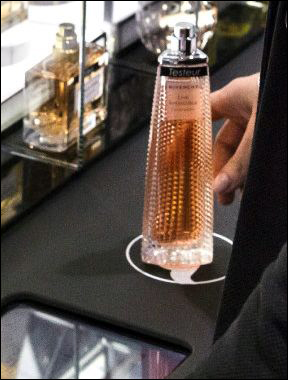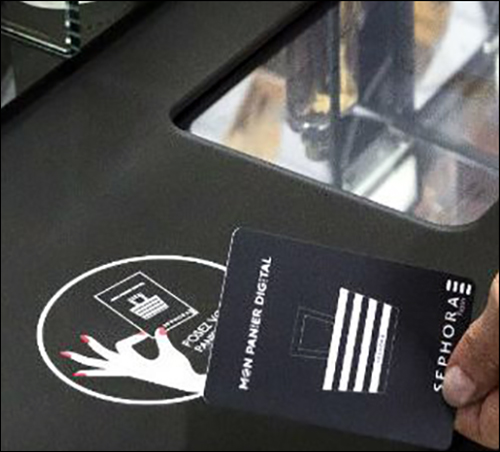Sephora, a beauty products retailer owned by LVMH, is employing Near Field Communication (NFC) RFID technology to bring a more interactive experience to shoppers at its Sephora Flash boutique. The retailer has added NFC passive RFID tags to the bottoms of perfume testers (bottles that shoppers used to sample fragrances), and has installed readers behind touchscreens to display content regarding a particular product. Shoppers can also use a card with an embedded NFC RFID tag to create a shopping cart that includes items not in the store, along with those that are present, enabling them to buy all desired items during a single sales transaction.
The Sephora Flash store aims to make cosmetics and perfume purchasing easier for shoppers, even if the items they seek aren’t available at the store. The company calls this its Click & Collect service.

The 100-square-meter (1,076-square-foot) Flash store, which opened in October 2015 at 66 rue de Rivoli in Paris, stocks some popular brands and products onsite, but also provides access to 14,000 products from 150 brands that might not be there, via its digital catalog. Sephora’s own lab created the RFID solution deployed in-store (the company declines to name the makes and models of the tags and readers it is using).
At the Sephora Flash store, staff members provide customer assistance and transact purchases. However, shoppers can also sample goods on their own via a perfume wall, and can learn more about each product by using the interactive technology.
First, a shopper selects a perfume tester and samples its fragrance. If she likes that product and wants to learn more about it, she can place the tester on a designated spot under which an NFC reader captures the unique ID number encoded to the tester’s RFID label. The ID is thus linked, in Sephora’s software, to the product’s stock-keeping unit (SKU), thereby prompting the touchscreen to display pricing and other product information.
If that product is stocked at the store and the customer wishes to buy it, she can simply take it off the shelf and bring it to the sales counter. However, the store also offers many products that are not in stock at the site. To purchase any of those goods, a shopper takes an RFID-enabled card (similar in size to a credit card) with an NFC tag built into it. She places the card onto a designated spot next to a touchscreen, and the tester on another designated spot on the counter. The RFID tags of the tester and card are read, enabling the customer to automatically add that product to her digital shopping cart. She can then continue to add products to her cart until she is ready to complete her purchase.
Next, the customer takes the NFC card to the sales counter, where the employee uses another NFC reader to read the card’s ID, thereby calling up all products in her digital cart in the Sephora software. The worker then rings up the total cost to complete the transaction. The customer can request that the products be mailed to her home (if she lives in France), or be delivered to the store where she can return to pick them up the next day.

Sephora also offers a Sephora app for fast shopping options on iOS or Android smartphones or tablets. However, the system does not currently enable individuals to capture data about a specific perfume via a smartphone’s built-in NFC reader, or to create a shopping cart on the device while at the store.
To date, the technology at the Flash boutique has been well received by Parisian shoppers, according to a Sephora spokesperson who has asked to remain unnamed. “Customers are very happy to shop for perfume and cosmetics in a new way,” he states.
The Sephora Flash boutique is serving as a test to gauge consumer interest, the Sephora spokesperson explains. Based on the boutique’s success, the company may consider opening up more such stores in the future.

